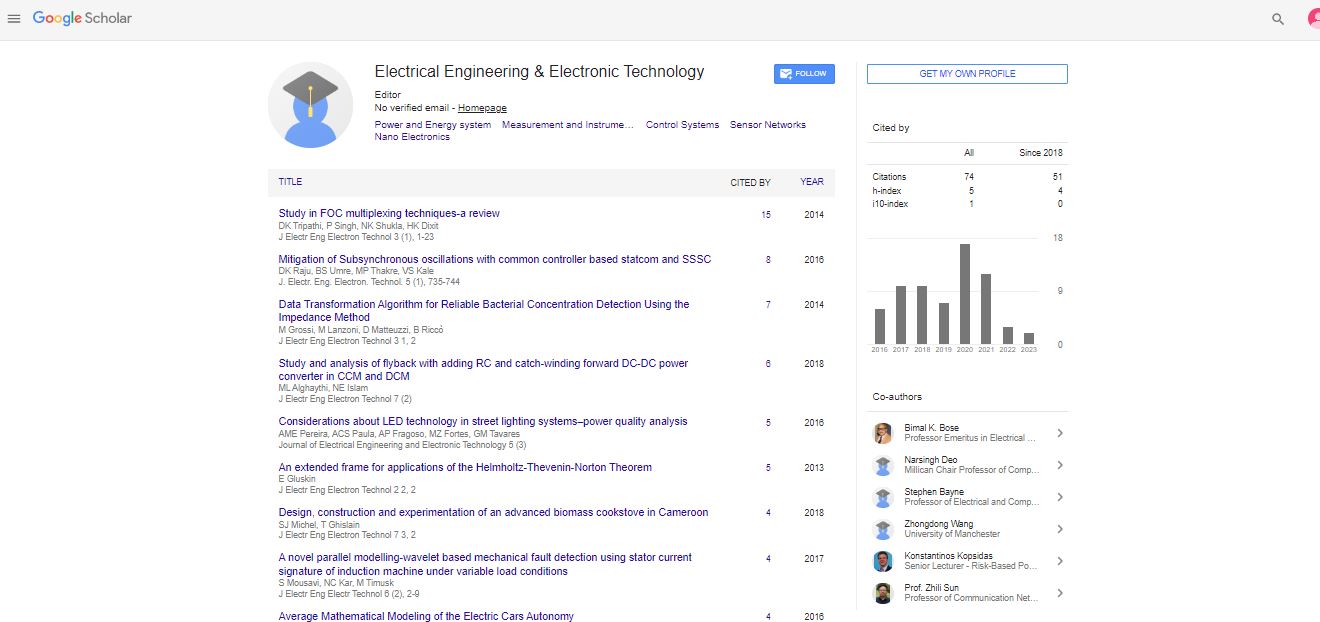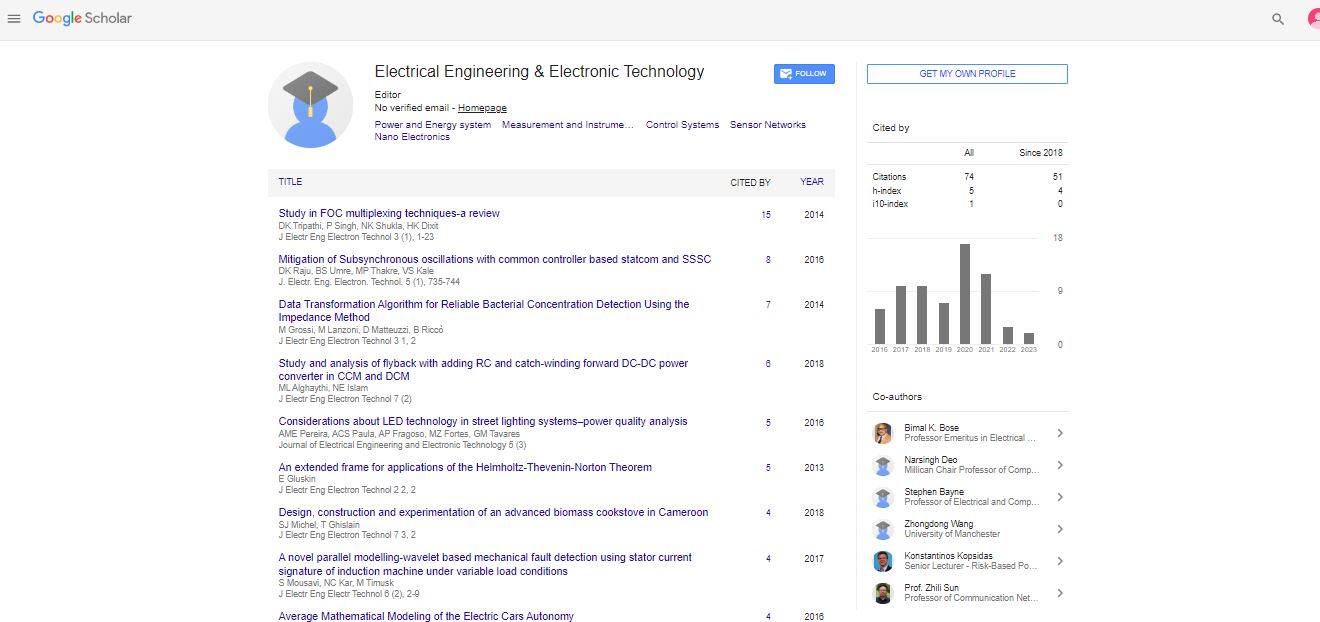Research Article, J Electr Eng Electron Technol Vol: 10 Issue: 10
The Effect of Ni Doping on the AC Conductivity and Dielectric Properties of Fe-Doped TiO2
Marwa Belhaj1,3* , TA Abdel-Basset1,2 , Mosa Alsehli4 and Ali H Bashal4
1Department of Physics, Taibah University, Yanbu, Saudi Arabia
2Department of Physics, Fayoum University, Fayoum, Egypt
3Nanomisene Lab LR16CRMN01, Center of Research on Microelectronics and Nanotechnology of Sousse, Technopark of Sousse, Sahloul Sousse, Tunisia
4Department of Chemistry, Taibah University, Yanbu, Saudi Arabia
*Corresponding author: Marwa Belhaj, Department of Physics, Faculty of Science, Taibah University, Yanbu, Saudi Arabia; E-mail: marwabelhaj2@gmail.com
Received date: September 21, 2021; Accepted date: October 06, 2021; Published date: October 13, 2021
Abstract
Owing to its peculiar physical properties, Titanium Dioxide (TiO2) has found various applications and been an interactive material for research in the field of semiconductor physics. To study the crystallographic nature of prepared Fe/TiO2 and Ni- Fe/TiO2, X-ray Diffraction (XRD) study was done. The result shows that both pure and doped TiO2 samples were anatase phase with the absence of diffraction peaks of Ni or Fe. The Scanning Electron Microscopy (SEM) images revealed that the particle morphology was altered by dopants incorporation which acted as nucleation sites. The dielectric properties and electrical conductivity for TiO2 and TiO2 loaded Fe, Ni and Ni- Fe composition within the temperature range 25°C-110°Cand over the frequency range (100 Hz-0.3 MHz) were also carried out. The values of dielectric constant and dielectric loss decrease with increasing frequency. The dielectric permittivity for Fe/TiO2 exhibits relatively lower dielectric constant than Ni- Fe/TiO2. A relaxation peak has been recognized and shifted to higher frequency with increasing temperature. The ac conductivity was found to increase with frequency which could be related to the hopping conduction process. The activation energy Ea for Fe/TiO2 was higher than Ni-Fe/TiO2 and decreased with increasing frequency.
Keywords: Fe doped TiO2; Ni-Fe doped TiO2; AC conductivity; Dielectric properties; Activation energy
Introduction
The development of high-energy-density storage devices and capacitors, recently, has motivated many investigators to find a new dielectric material [1]. With the intention of makinga valuable dielectric materials, the materials should have the following features; low dielectric loss (103), and dielectric properties nearly independent of frequency and temperature. Dielectric materials such as BaTiO3 [2], NiO [3], and CuO [4] have been proposed in the literature however these types of materials did not meet all these four features. Therefore, finding a new type of material is valued. Titanium dioxide TiO2 is a member of the transition metal oxides family [5]. It exists in three different phases namely rutile, brookite and anatase. It is found that anatase has a lower dielectric constant than the rutile phase of TiO2 [6].
 Spanish
Spanish  Chinese
Chinese  Russian
Russian  German
German  French
French  Japanese
Japanese  Portuguese
Portuguese  Hindi
Hindi 
